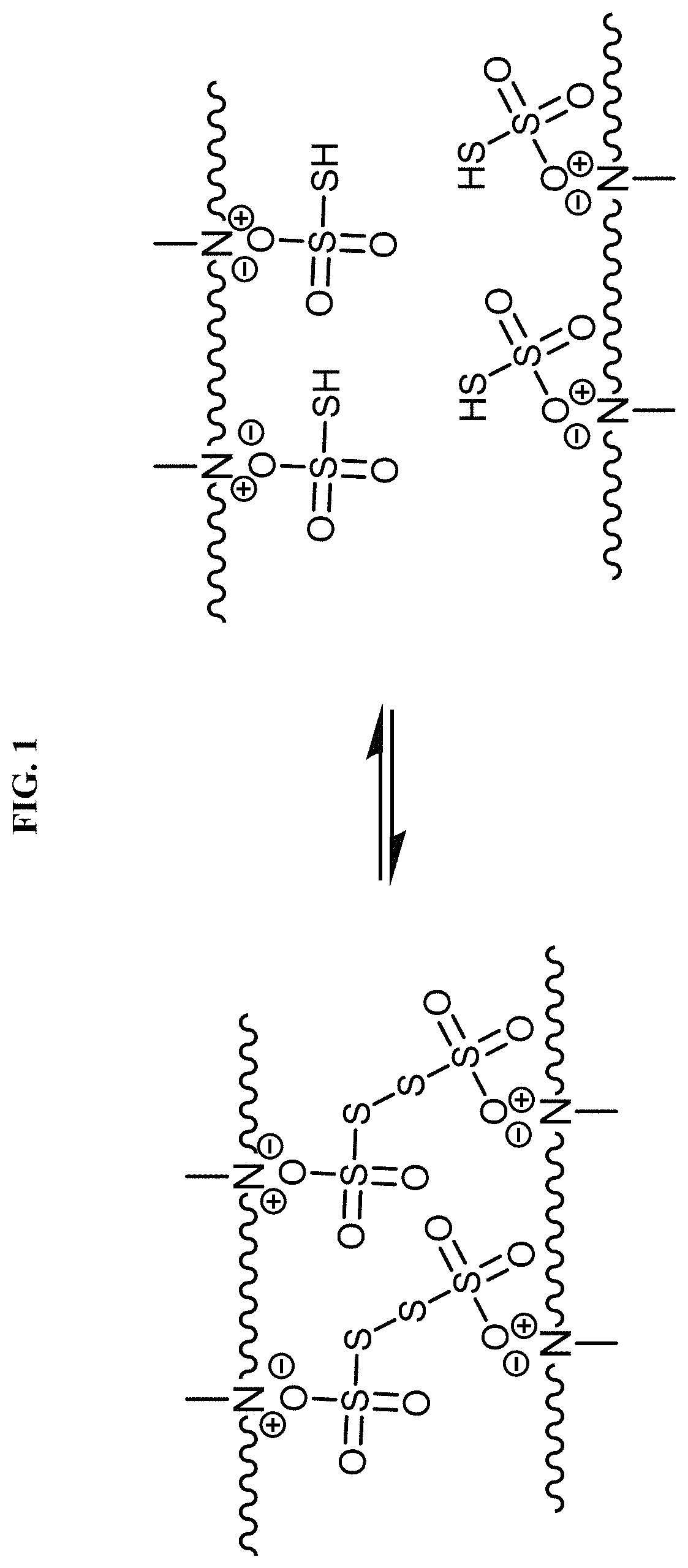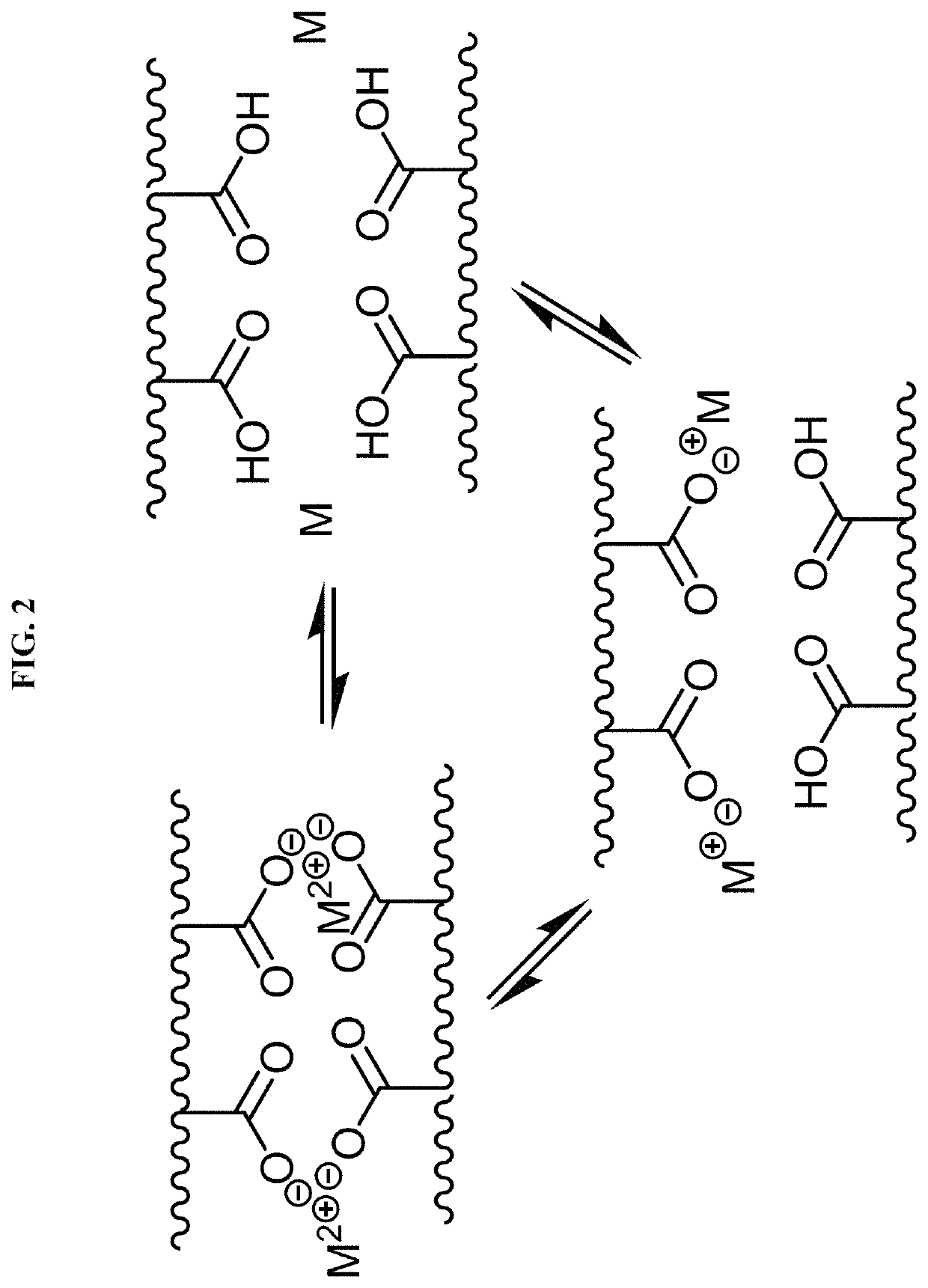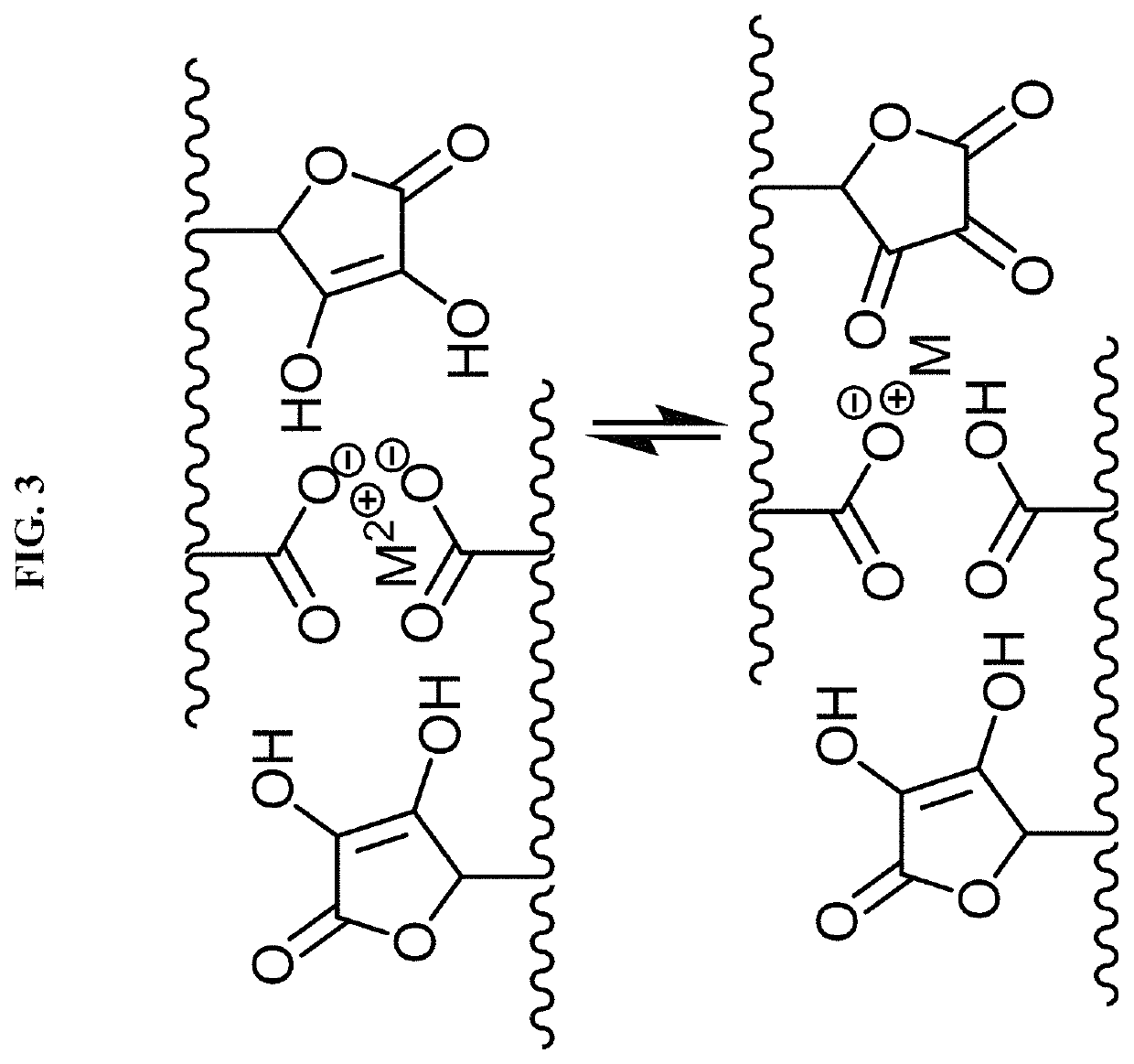Chemically or environmentally responsive polymers with reversible mechanical properties
a technology of mechanical properties and polymers, applied in the direction of coatings, polyurea/polyurethane coatings, etc., can solve the problems of material being more vulnerable to creep under stress, reducing the number of crosslinks, and no longer being reworked
- Summary
- Abstract
- Description
- Claims
- Application Information
AI Technical Summary
Benefits of technology
Problems solved by technology
Method used
Image
Examples
example 1
of Polymer with Ionic Species
[0233]Hydroxyl-terminated poly(ethylene glycol) (Mn=3400 g / mol, 2.50 g, 0.74 mmol) is placed in a 3-neck round-bottom flask that contains an inlet for argon and is equipped with an overhead stirrer (Teflon shaft and blade). While stirring, 4,4′-methylenebis(cyclohexyl isocyanate) (3.72 g, 14.20 mmol) is added to the solution and the flask is placed in an oil bath at 100° C. Dibutyltin dilaurate (0.02 wt %) catalyst is then added to the solution using a micropipette and the reaction is allowed to proceed.
[0234]After 1 h, 2,2-bis(hydroxymethyl)propionic acid (0.39 g, 2.91 mmol) is added to the stirring solution and allowed to dissolve and react for 1 h. After 1 h, Fluorolink E10-H (2.78 g, 1.40 mmol) is added to the stirring solution and allowed to react for 2 h at 100° C., forming a prepolymer.
[0235]The prepolymer is then allowed to cool down to room temperature. The prepolymer is diluted with tetrahydrofuran (9.15 mL) and placed in a plastic mixing conta...
example 2
of Polymer with Ionic Species
[0236]Hydroxyl-terminated poly(ethylene glycol) (Mn=3400 g / mol, 2.50 g, 0.74 mmol) is placed in a round-bottom flask that contains an inlet for argon and is equipped with an overhead stirrer (Teflon shaft and blade). While stirring, 4,4′-methylene-bis(cyclohexyl isocyanate) (4.49 g, 17.14 mmol) is added to the solution and the flask is placed in an oil bath at 100° C. Dibutyltin dilaurate (0.02 wt %) catalyst is then added to the solution using a micropipette and the reaction is allowed to proceed.
[0237]After 1 h, 2,2-bis(hydroxymethyl)propionic acid (0.79 g, 5.89 mmol) is added to the stirring solution and allowed to dissolve and react for 1 h. After 1 h, Fluorolink E10-H (2.78 g, 1.40 mmol) is added to the stirring solution and allowed to react for 2 h at 100° C., forming a prepolymer.
[0238]The prepolymer is then allowed to cool down to room temperature. The prepolymer is diluted with tetrahydrofuran (12.75 mL) and placed in a plastic mixing container ...
example 3
of Polymer with Ionic Species
[0239]In a typical experiment, hydroxyl-terminated poly(ethylene glycol) (2.50 g, 0.74 mmol) is placed in a 3-neck round-bottom flask that contains an inlet for argon and is equipped with an overhead stirrer (Teflon shaft and blade). While stirring, 4,4′-methylenebis(cyclohexyl isocyanate) (1.85 g, 7.06 mmol) is added to the solution and the flask is placed in an oil bath at 100° C. Dibutyltin dilaurate (0.02 wt %) catalyst is then added to the solution using a micropipette and the reaction is allowed to proceed.
[0240]After 1 h, 2,2-bis(hydroxymethyl)propionic acid (0.30 g, 2.24 mmol) is added to the stirring solution and allowed to dissolve and react for 1 h. After 1 h, Fluorolink E10-H (1.46 g, 0.97 mmol) is added to the stirring solution and allowed to react for 2 h at 100° C., forming a prepolymer.
[0241]The prepolymer (6.1 g) is then allowed to cool down to room temperature. The prepolymer is diluted with tetrahydrofuran (6.5 mL) and placed in a plas...
PUM
| Property | Measurement | Unit |
|---|---|---|
| wavelengths | aaaaa | aaaaa |
| wavelengths | aaaaa | aaaaa |
| wavelengths | aaaaa | aaaaa |
Abstract
Description
Claims
Application Information
 Login to View More
Login to View More - R&D
- Intellectual Property
- Life Sciences
- Materials
- Tech Scout
- Unparalleled Data Quality
- Higher Quality Content
- 60% Fewer Hallucinations
Browse by: Latest US Patents, China's latest patents, Technical Efficacy Thesaurus, Application Domain, Technology Topic, Popular Technical Reports.
© 2025 PatSnap. All rights reserved.Legal|Privacy policy|Modern Slavery Act Transparency Statement|Sitemap|About US| Contact US: help@patsnap.com



